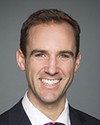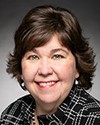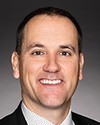Thank you very much, Madam Chair.
Thanks to both of you for the presentation this evening. I too share the excitement of today being Census Day, and I promise that I will get a tweet out before the end of the evening.
Evidence of meeting #7 for Pay Equity in the 42nd Parliament, 1st session. (The original version is on Parliament’s site, as are the minutes.) The winning word was banks.
A video is available from Parliament.
Liberal

Matt DeCourcey Liberal Fredericton, NB
Thank you very much, Madam Chair.
Thanks to both of you for the presentation this evening. I too share the excitement of today being Census Day, and I promise that I will get a tweet out before the end of the evening.
Liberal

Matt DeCourcey Liberal Fredericton, NB
I also appreciate the nuance and the diversity that are part of the gender wage gap, and the interconnected components, but I want to try to focus it back onto the conversation around the introduction of pay equity legislation in the provinces—Quebec and Ontario—that have legislation covering both public and private sectors, as well as the other provincial examples.
I wonder if we could go back into what the statistics show us, following up on what Mr. Albas had us starting to examine. Can we look at how that legislation has helped address the wage gap? Maybe you can delve into some of the examples of the other provinces, such as New Brunswick, Nova Scotia, or Prince Edward Island.
Director, Labour Statistics Division, Statistics Canada
We had a few numbers with us today for looking at the change in the gender wage ratio from 1997 to 2015.
The province with the biggest change in the gap was Nova Scotia. The second-biggest change is in New Brunswick—I'm from Fredericton too.
Director, Labour Statistics Division, Statistics Canada
I'm sorry. I'm just trying to order these: New Brunswick was third and P.E.I. was second. It looks like they were followed by Quebec and then Manitoba.
This is all information that can be calculated fairly straightforwardly from our database, but we could send this information to the clerk as well. They're just some summary statistics that we had pulled together to show what it is.
I'm not aware of anyone who has done a specific study looking at provinces that have put in pay equity and then digging further, because this is just pure raw information at a provincial level. It's not looking at differences by the different types of occupations or the public sector versus the private or any of that, but we do have that information in the labour force survey.
Liberal

The Chair Liberal Anita Vandenbeld
If it's possible, could you send that by the end of the week? We will be starting the report soon after that.
Liberal

Matt DeCourcey Liberal Fredericton, NB
Thank you very much.
Witnesses have come before us and talked to us about the challenges around the maintenance of a pay equity system once legislation or a model is in place. Do you have any statistics or any information that would look at how maintenance mechanisms in a pay equity regime might ensure that the gender wage gap continues to narrow?
Director, Labour Statistics Division, Statistics Canada
I can't even think of how you'd measure that, actually. I've never seen anything like that.
Liberal

Matt DeCourcey Liberal Fredericton, NB
I'm an arts graduate and I couldn't tell you how to do that either, but I certainly appreciate any information that can help us try to identify how the various provincial models can demonstrate gender wage inequities or greater equity.
I'll pass the rest of my time along to Ms. Sidhu.
Liberal

Sonia Sidhu Liberal Brampton South, ON
Thank you.
You've explained very well in this report how the changes are coming about and you've already explained the gender pay gap in Canada and how it has changed in the past few decades. What, in your view, has led to these changes? What were the circumstances?
Research Economist, Labour Statistics Division, Statistics Canada
In terms of the current pay gap, right now I think women earn on average about 87¢ for every dollar earned by men, and that's an hourly wage rate estimate.
In the article that's cited, “Why has the Wage Gap Narrowed ”, we looked at differences in education, job tenure, shifts in industry, shifts to higher-paying occupations, and occupational shifts of different age groups of workers. Some of those things account for about 60% of the reduction in the gap over time.
In another particular study with Michael Baker we calculated the adjusted pay gap over time. We saw that in the late 1980s the adjusted gap was much higher than the unadjusted gap, and by 2008 there was no difference between the adjusted gap and the unadjusted gap. That has to do with the fact that the differences in explainable characteristics between men and women are no longer explaining the gender wage gap by 2008, and there are more differences in how the labour market compensates men and women.
There are several interpretations along with this finding. First of all, men and women could be paid more equally in 2008 compared to 1988. We've seen a widespread convergence in unobservable characteristics between men and women. This would definitely be the case in work experience, which was not included in that particular study. We see that the attitudes towards women at work have also changed in that time. Those are some leading factors explaining why the gender wage gap has changed between 1988 and 2008.
Another potential factor is related to what we call a selection effect or a selection bias. Here we want to compare wages of men and women at two very different points in time, and the characteristics of people have been changing. One case in point here is that the employment rates of women have increased substantially between 1988 and 2008, so you can imagine a situation in which women in the late 1980s have above-average skills, and then there's a massive influx of women with average skills. This tends to decrease the wages of all women. Then when you're looking at the wage gap over time, it looks as if the wage gap didn't reduce as much as if you compared the exact same characteristics of workers.
When you control for the selection effect, the wage gap would be narrowed further by about 1.6 percentage points over that same period. If you do the same analysis on unobserved components of the wage gap, it could be as high as an additional 5%, so the wage gaps cited here could be a very conservative estimate about the reduction in the wage gap over time.
Liberal

The Chair Liberal Anita Vandenbeld
That's it for the time.
We will be moving on to Mr. Albas for five minutes.
Conservative

Dan Albas Conservative Central Okanagan—Similkameen—Nicola, BC
Thank you very much, Chair. I certainly appreciate the opportunity to follow up with a few different things.
In regard to my earlier question to Ms. Hale in regard to provincial breakouts, so to speak, I think we always should be very careful that correlation does not imply causation and about the counter-assumption that correlation proves causation. However, I do think it would be helpful to have breakouts from across the country, and perhaps some analysis as to what some of those trends may come from.
I'm not sure if they can be explained because we've learned about the unexplained components of some of the research, but I do think it would be helpful. I think we also have to bear in mind that by your presentation, the national average pay gap seems to be narrowing even if you look at it from a variety of different lenses.
That's what I take away—that on the whole we're seeing a narrowing. I'm not saying it doesn't exist and I'm not saying there's not room for us to work on it, but to me that's what I take away from some of the presentations that have been made here.
Is that correct?
Director, Labour Statistics Division, Statistics Canada
Yes. The trend in the hourly wage rate is going up.
Conservative

Dan Albas Conservative Central Okanagan—Similkameen—Nicola, BC
Okay. That's helpful.
Earlier my colleague, Ms. Gladu, had mentioned bonuses and there being no information as far as that is concerned. Is this something that can be implemented through a labour force survey or whatnot, or through general taxation, so that when someone files their taxes, you could take note of that from an aggregated data viewpoint? How do we capture that difference?
Director, Labour Statistics Division, Statistics Canada
We do get bonuses at an aggregate level. The problem is to get at it at an individual level. In the labour force survey we're only getting people's average wage at the time when they are in the survey. That doesn't quite work, because bonuses are very much an ad hoc.
Conservative

Dan Albas Conservative Central Okanagan—Similkameen—Nicola, BC
Does the aggregate data you get come from taxation?
Conservative

Dan Albas Conservative Central Okanagan—Similkameen—Nicola, BC
Okay. Does that aggregate data also allow you to compare between men and women?
Conservative
Director, Labour Statistics Division, Statistics Canada
Yes. We don't have details.
Conservative

Dan Albas Conservative Central Okanagan—Similkameen—Nicola, BC
Is that within your authority at StatsCan, or do you need a minister to direct you, through an order in council, to prepare a report that would be like that, or is that—